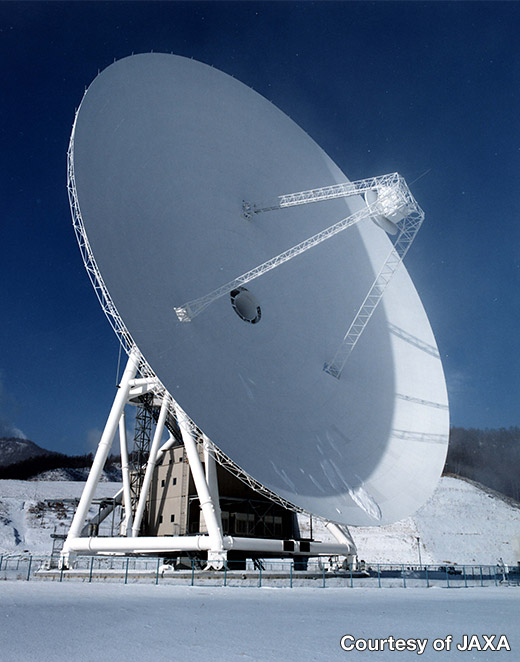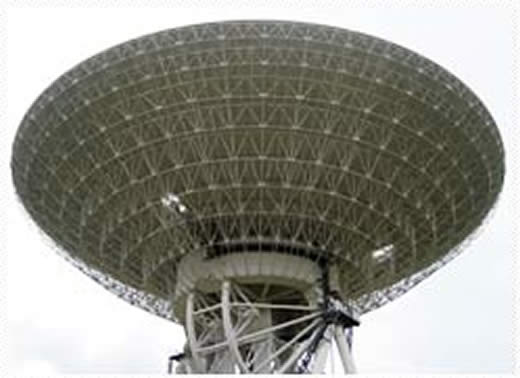Ground SystemsControl Systems

JAXA New Ground Network (GN)

JAXA Tracking Control for Launch Vehicles

The Ground Operations Systems for the Himawari-8,9

64m Parabolic Antenna (Usuda Deep Space Center)

New Ground Antennas and Satellite Control System for QZSS
64-meter Deep-space Antenna at the Usuda Deep Space Center
Usuda Deep Space Center Communicating with Deep Space
Measuring 64 meters in diameter and weighing 1,980 tons, this is one of the largest parabolic antennas in the world. It plays an important role in communicating with, and controlling and tracking deep-space satellites from Japan and other countries overseas. In 1986, it made contact with the Sakigake and Suisei exploration satellites that are observing Halley’s Comet, which obits the sun once every 76 years.
In recent years, it assisted in tracking and controlling the lunar orbiter Kaguya, and Hayabusa, which explored the asteroid Itokawa. Other projects it has been used for include the IKAROS small solar-sailing spacecraft and the Akatsuki Venus probe mission.
Outside of Japan, there are few organizations in the world that own such a large-scale antennae installed for tracking and controlling deep-space probes: namely, NASA in the United States, ESA in Europe, IKI in Russia. Therefore, this antenna is counted on globally to enable access to probes during deep-space exploration.

Mitsubishi Electric’s technological edge to deliver monolithic antennas
This antenna weighs tons due to the large 64-meter aperture mirror incorporated. The weight causes distortion when the antenna is tilted towards the target probe or celestial object. However, the homological design ensures that the mirror shape retains its parabolic curves even when the antenna is distorted under its own weight. Combined with the use of a master collimator, high pointing accuracy is ensured.
Thanks to these technologies, the antenna delivers the world’s highest level of performance. Backed by the advanced technologies utilized, this antenna is keeping a watchful eye on deep space.
